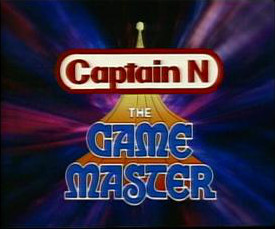Excuuuuuse me, Princess, but this show is kind of lame
 A few days ago I mentioned something about that Legend of Zelda show. I really love the Zelda games; I even bought a Gameboy link cable that I only used once just to be able to transfer data from one Gameboy with Oracle of Seasons in the cartridge bay to another Gameboy (which I borrowed) with Oracle of Ages. When the first game came out for the NES I thought it was the pinnacle of gaming (then again, I thought the same about many games), and thus I got excited when the TV said something about a cartoon show based on the game. I was like, "Cool--I get Super Mario Brothers AND Zelda in one show!"
A few days ago I mentioned something about that Legend of Zelda show. I really love the Zelda games; I even bought a Gameboy link cable that I only used once just to be able to transfer data from one Gameboy with Oracle of Seasons in the cartridge bay to another Gameboy (which I borrowed) with Oracle of Ages. When the first game came out for the NES I thought it was the pinnacle of gaming (then again, I thought the same about many games), and thus I got excited when the TV said something about a cartoon show based on the game. I was like, "Cool--I get Super Mario Brothers AND Zelda in one show!"
To be honest, I still do sort of like the little cartoon, though probably not for the intended reasons. I like the cheesy "Excuuuuse me" line and I use it among my friends when I'm feeling a little sassy. I miss the times when I still had friends...
Uh, anyway, about the show. It doesn't deviate too much from the original premise of Zelda games: Ganon captures Zelda and Link has to rescue her, lather, rinse, repeat. Though I think she gets kidnapped a little too many times in the show. I also think Link has too much attitude compared to his silent, innocent, heroic videogame counterpart. But it had nice fight scenes, talking Triforce, and, fuck, it was Legend of Zelda, so like every easily-impressed child I followed the show and talked about it with my friends, etc.
Then I forgot about it completely until the other day when I made a reference to it. Like most other cartoons, it now seems corny and cheesy, and sort of blasphemous, because Link isn't even supposed to be talking that much, let alone talk trash. As well, he isn't supposed to be asking for anything in return, especially not favors of the flesh from none other than Princess Zelda herself. (Don't worry he just wanted a kiss on the cheek. What a dork.)
However, the thing that bugs me the most is the way Link and Zelda's characters are made to interact with each other. As you know, the Princess is way out of Link's league, him being a plain ol' sword-wielding hero of awesome summoned every now and then (actually quite often) to save Hyrule (just how many times does Ganon have to be killed?) and the Princess herself. In the TV show, it seems as if they're trying to develop a romantic link (har har..?) between the two. Because of this I got brainwashed into believing that Link heart Zelda when I played the games. And what the hell is Zelda doing fighting alongside Link, when the purpose of Link being there is to rescue her in the first place anyways?
The show got canceled after 13 episodes, because Super Mario Brothers got canceled. I don't know whether you think it's good or bad, but I think it's sort of a blessing in disguise. But you know, I'll buy the DVD just so I can re-enjoy the cheesiness. Why did we like cheesy things back then?















